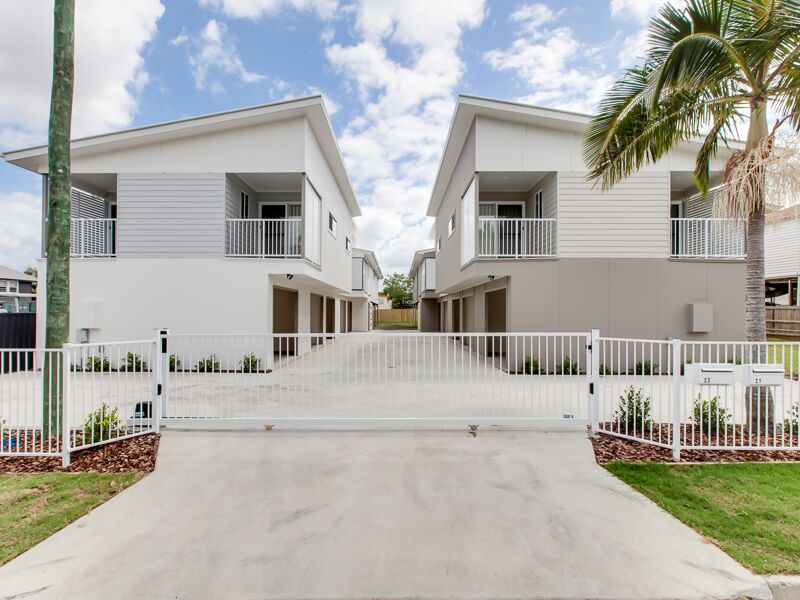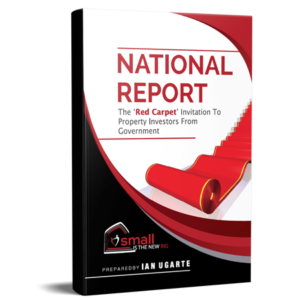I’ve been investing in property for almost 3 decades and I’ve seen just about every mistake, and made a few of my own. In fact, I almost lost it all (including my family and my sanity) by following ‘conventional’ property wisdom). Read my latest article for urban.com.au and you too can avoid the 4 most common pitfalls of property investment
Avoid these 4 pitfalls in property investment
By Ian Ugarte, urban.com.au, AUG 4, 2020.
According to the Australian Taxation Office (ATO), figures released for the 2017-18 tax year showed 71% of property investors in Australia own just one property while .09% (or 20,756 Australians) own six properties or more properties.
Why is it that 1.5 million people are financially savvy enough to appreciate that investing in property is a great way to build wealth, but a fraction of those people purchase additional properties to build a meaningful portfolio?
When you are working to build a financially sound portfolio, there are four main pitfalls that you need to look out for.
These include:
- Falling in love with a property
- Trading property
- Negative gearing
- Cross-securitisation
SCROLL DOWN to find out why I say negative-gearing is the wrong strategy to implement.

Falling In Love With a Property
When most people consider buying an investment property, they view the property and make a decision based on whether they love the property and personally would like to live in it or not.
This is the scenario that sales agents want to see. Ideally they will be looking for two or three prospective buyers to fall in love with the same property and push up the price.
Emotion is why auctions work so well – people get carried away and keep on bidding even when the price surpasses their budget.
Falling in love with a property means you will almost certainly pay more than you should, and then you will struggle to let go when the time is right to sell – both can be costly.
Keep in mind that the investment properties you buy should make you money for the long term. It’s all about the numbers and how it will help you reach your future goals.
Trading Property
Trading property can be a legitimate way to make money but it’s not always the best way to build wealth.
Even if you sell your recently renovated property for a handsome profit, it’s not that different from the money you earn working your day job.
In a job you need to pay tax before you ever see a cent of your wages. If you trade property, then the government is going to take its slice by way of capital gains tax before you see a cent.
On top of that, you’ll have agent’s fees, legal fees, and possibly bank fees too. This means that your profit is constantly being eaten away by other interested parties keen to take their slice.
As long as a property is positively geared or cash flow neutral I’d strongly suggest you hang on to it. Not only will you benefit from the capital growth over time but the property will start working for you by creating residual income through rent.
Real wealth comes from the accumulation of assets, not trading assets.
Negative Gearing
The idea of negative gearing is that you buy a property and then rent it out. However, if property values are rising, often it means that your rental income wouldn’t cover your mortgage payments, strata fees and other running costs.
The result of this is that each month you would need to eat into your savings or divert funds from your day job so you can cover the shortfall.
The story told by the banks and accountants was that as long as you are able to meet those additional cash flow needs for a few years, the rent would rise to meet those costs and you would be fine.
Basically, your tenant would be paying off your mortgage and you would keep the appreciating asset and any additional income from the rent. This would mean you don’t pay any tax because your property is losing money.
Forget about the tax you might save – if the property is costing you money and eating into your income or salary then it’s keeping you in a job. It is not helping to liberate you from it.
If building wealth is creating constant stress then perhaps the price is too high and you need a better strategy.
I would suggest doing thorough research and only buy properties that are cash flow neutral or positive. This way, the property pays for itself without any additional cash injection from you.
LEARN MORE about why negative gearing is an outdated strategy HERE

Cross-Securitisation
Once you start building your property portfolio the biggest mistake you can make is cross-securitisation – in other words, borrowing money from the same bank for all your properties.
If one bank owns all your debt, they control you and that’s never a good position to be in. They can dictate how much borrowing is available to you and can also increase the interest rate if they want to. To tempt you in, they may offer an insignificant reduction (such as 0.2%) below the normal interest rate.
Don’t bite the bait. Stay protected and maintain some control and flexibility!
The key is not to have all your properties with one lender so that if any of them change their lending rules you can more easily move to another lender that you already have a relationship with to refinance quickly.
The other benefit is that you will create a track record with a number of financial institutions which will make it easier to get finance from a new lender in the future.
There is little doubt that buying property can build wealth but it is just like any other investment vehicle – you really have to do your research.
LEARN HOW to build a cash flow positive property portfolio by joining my FREE live webinar HERE





